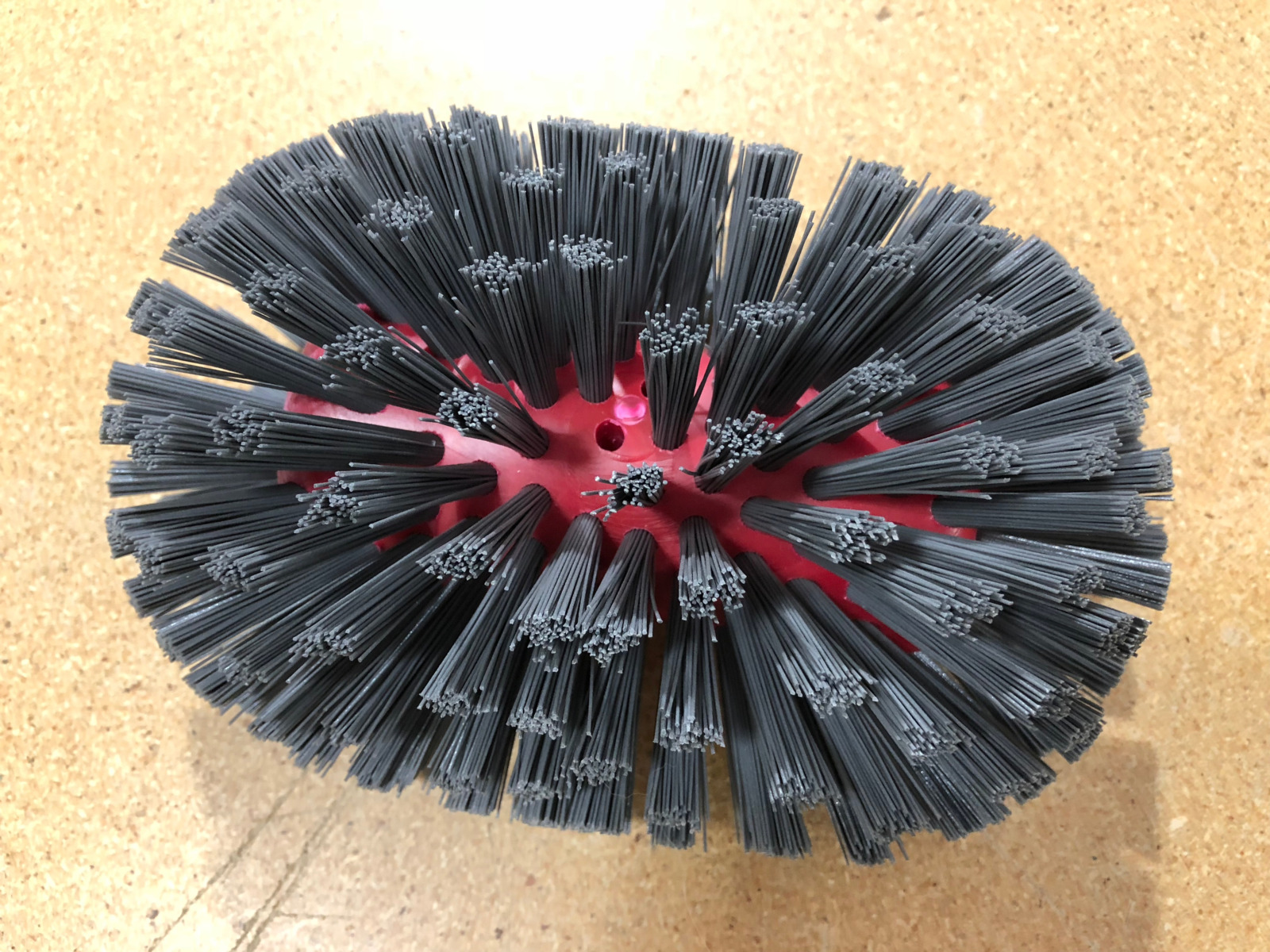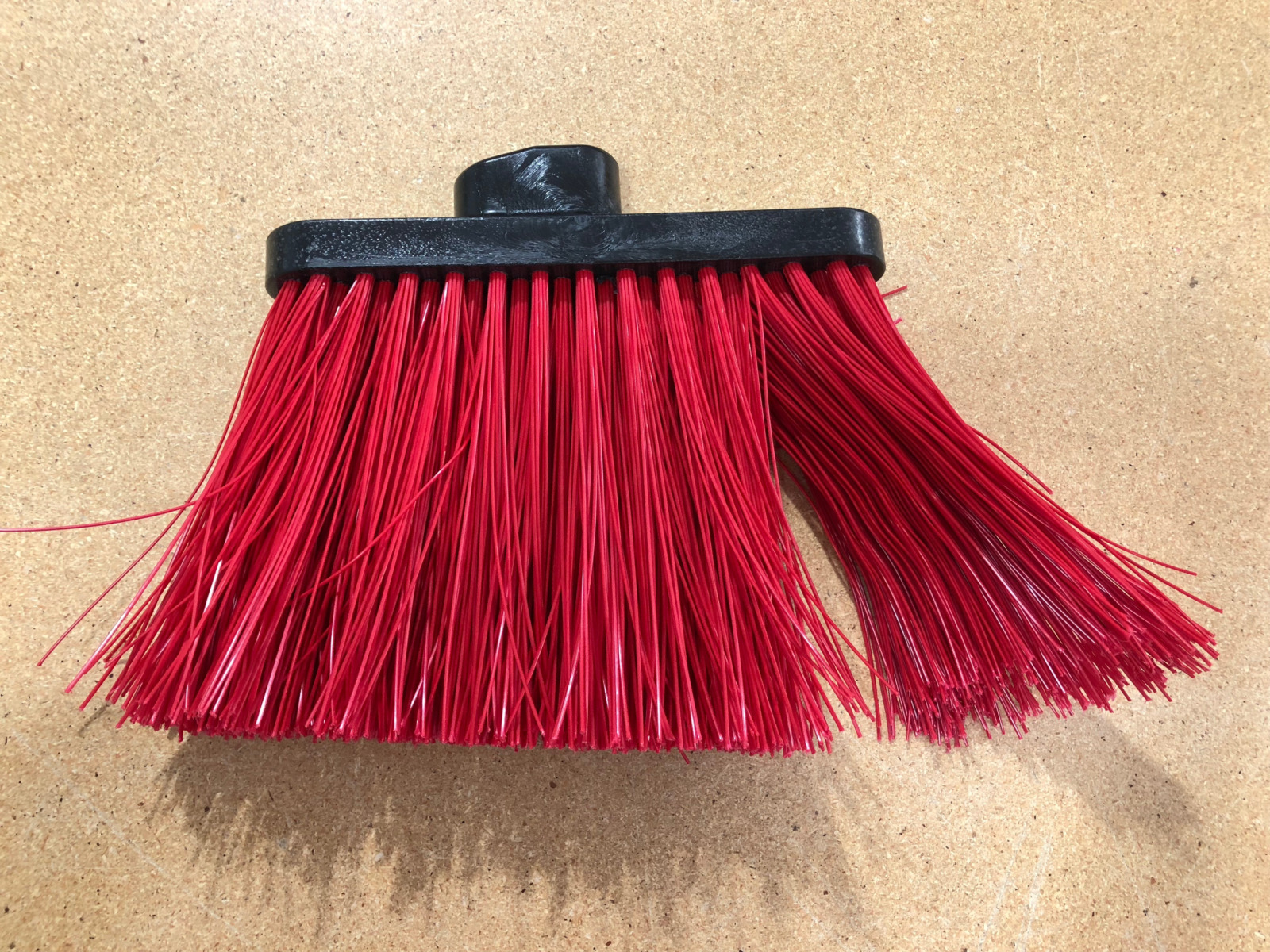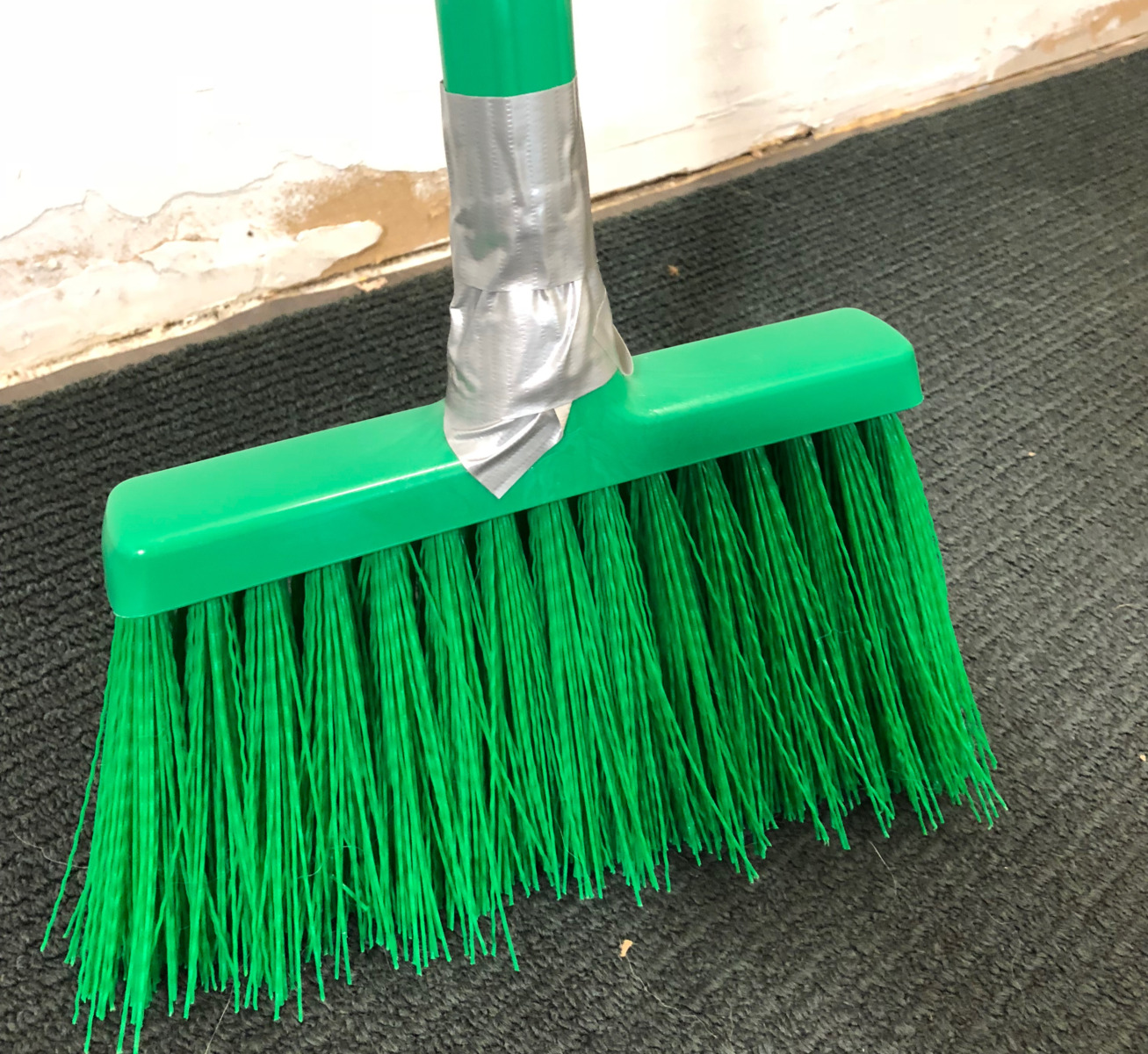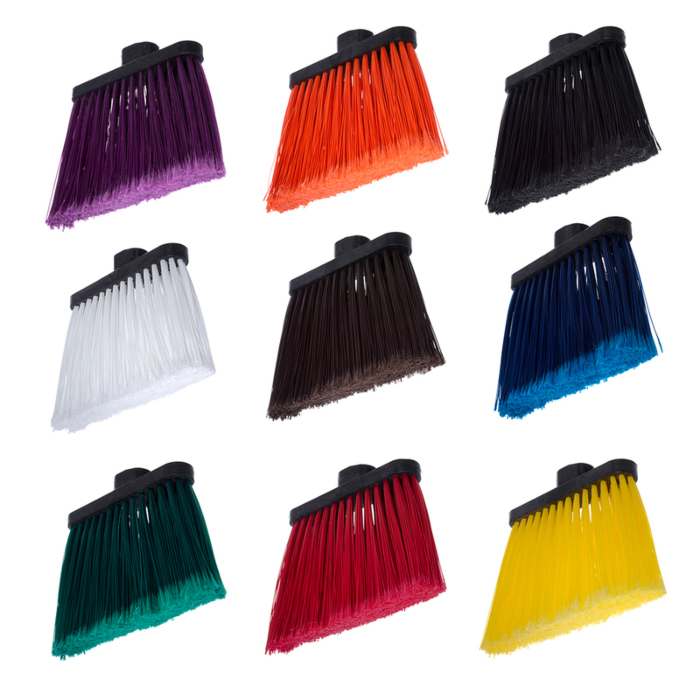Due to their frequent use and difficult jobs, even the most high-quality, commercially used color-coded cleaning tools eventually wear out and need to be replaced. During its lifetime, a tool’s wear and tear can lead to the loss of its hygienic qualities, and can eventually cause the tool to break down and function improperly. These things might happen at the same time, or they might occur on their own.
Are you wondering if its time to replace your tools? To help you decide, here are a few commonly encountered situations.
To view this content as a printable pdf, click here.
Category: Loss of hygienic qualities, but function maintained

-
Damage to brush block or handle
- Example: Hand scrub brush, used daily on a conveyor belt
- What happens: Over time, a brush block can be dinged or nicked, creating crevices where food product or bacteria can hide. The brush bristles may still be intact and functioning as needed, but due to the state of the block, the tool is no longer hygienic.
-
Bristles falling out
- Example: A baker’s brush used to sweep a production area
- What happens: After frequent use, the tool might lose a bristle tuft. While the brush itself might still sweep and operate, it is no longer hygienic, as the exposed bristle hole becomes a risk for the entrance of food product or bacteria. The loss of one tuft is typically an indicator that additional bristles will follow.
-
Brittle block, bristles, or handle
- Example: The handle of a plastic broom, kept outside in a cold climate
- What happens: Repeated or ongoing exposure to extreme temperatures (hot or cold) can make plastic handles, blocks, or bristles brittle over time. Brittle tools are more prone to break, thus creating a hygienic issue. Note that this only happens at extreme winter temperatures, or in high heat areas like furnaces.
Should I replace the tool?
- Does the tool come in contact with food or product? If yes, the tool should be replaced.
- Is the tool for environmental cleaning only? If yes, we recommend replacing the tool after its function begins to fail.
Category: Loss of function, but hygienic qualities maintained

-
Splayed bristles
- Example: Brush bristles are permanently forced out of position
- What happens: Overuse, or overexposure to chemicals and heat, can cause bristles to splay out, which is also known as “taking a set.” When this happens, a brush’s effectiveness changes dramatically, especially when scrubbing or sweeping. In most cases, the brush would still be considered hygienic.
-
Worn out handle
- Example: A broom handle breaks along at a stress point
- What happens: Though very difficult to do, it is possible for the threads on a tool handle to wear out. This means that the handle will no longer function properly, and it will no longer effectively connect to a broom, brush, or squeegee. Though the handle has lost its function, the handle itself is still hygienic.
When should I replace the tool?
- Has the tool lost its function? If yes, it is time to replace - regardless of whether or not it has maintained its hygienic qualities. When not functioning properly, workers will take longer to do a job, or not clean as well.
- Does the tool work as well as it used to? If no, then it is time to replace.
Category: Loss of function and loss of hygienic qualities

-
Worn-down bristles
- Example: Short bristles on a hand brush
- What happens: Overuse and overexposure to heat or chemicals can cause bristles to wear down to stubs that no longer sweep, scrub, or do anything productive or functional. This is also a bad situation from a hygiene perspective, as the bristles could have fallen out, broken, and found their way somewhere they shouldn’t be.
-
Broken handle
- Example: Handle broken in half and taped together
- What happens: Handles can break in half, and more often than you might realize, people try to tape them back together. Tape is always a bad idea for tools inside a food plant on tools. The inner cavity of the handle and the tape itself can harbor bacteria. This situation is not ideal for the tool function or hygiene.
When should I replace the tool?
- Simply put, if the tool no longer works, and is no longer hygienic, it is time to go tool shopping.
